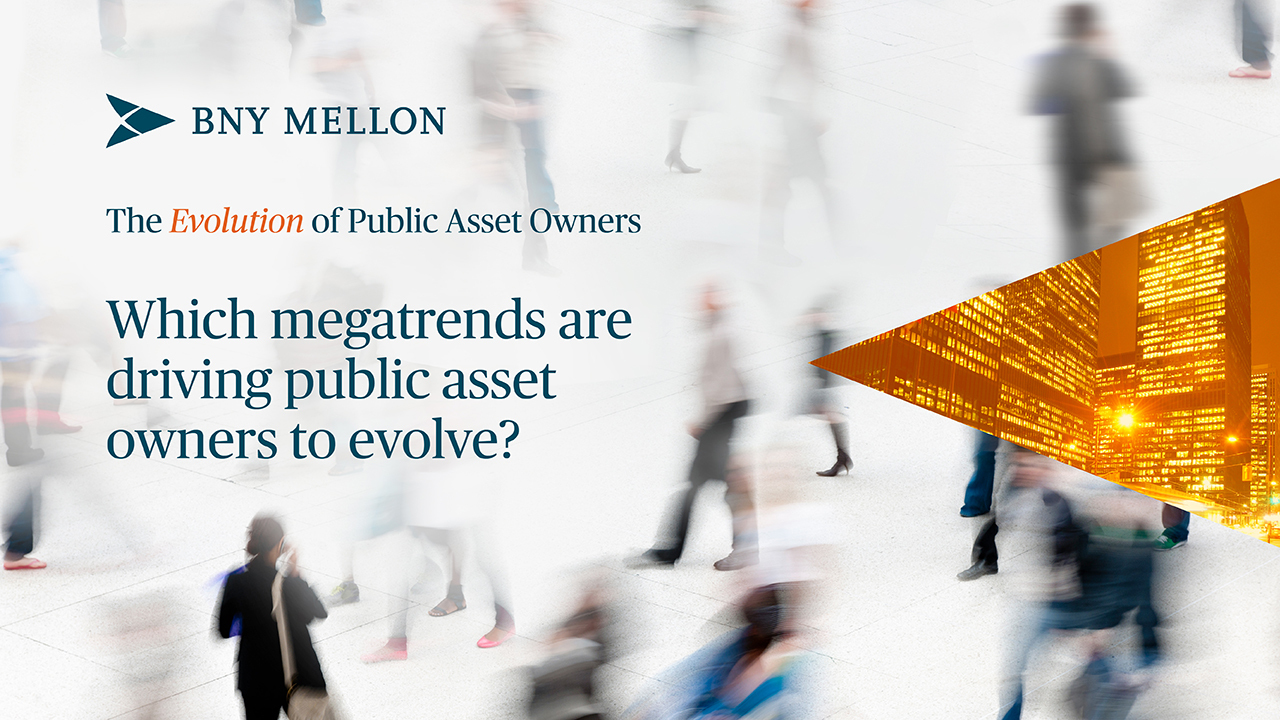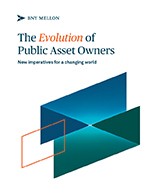Six Megatrends That Matter for Public Asset Owners

Six Megatrends That Matter for Public Asset Owners
The Evolution of Public Asset Owners
June 2022
Watch a short video.
Profound societal, economic and technological changes have upended many of the norms and expectations that had held sway since the financial crisis of 2008-2009. Our interviews with more than 90 senior leaders from nearly 50 public asset owners globally revealed six megatrends that acutely influence their priorities, investment strategies, operations and future.
Are you an explainable AI company that we should know about?
Learn More [link to accelerator program page]
Interested in learning more about emerging technologies for the financial services industry?
Sign-up for The Quarterly Update

1. Shifting Up for Yield
A decade of historic lows has pushed public asset owners to embrace diversification and look beyond traditional portfolios focused on sovereign fixed-income holdings. Conservative central banks have explored corporate bonds and equities. Public pension funds have made significant moves into alternatives. The most sophisticated investors (typically sovereign wealth funds) have widened their multi-asset strategies to include new types of alternatives, including hard assets and market infrastructure. Finally, the need to generate returns has prompted many public asset owners to reconsider securities lending.
2. ESG: Imperative, but Ambiguous
Most public asset owners interviewed now consider environmental, social and governance (ESG) factors in their investment strategy, manager selection or exclusion lists. Some even play an activist ESG role. The practicalities of incorporating ESG into investments and operations are now the key challenge. Many public asset owners are exploring how best to balance ESG objectives, investment performance and the need to substantiate their ESG advances, while issues surrounding ESG data along with a lack of consensus on evaluation and analytical methodologies hinder ESG progress.
3. A Growing Focus on Transparency
Leaders we interviewed say that stakeholder expectations have raised the pressure to be transparent. As a result, many believe they need to be able to provide the public and media with near-instant insights into strategy and investments. Transparency must also be provided in new ways. For instance, leading public pension funds use innovative technology to build simulation exercises, interactive apps and comprehensive lifestyle overviews that enable members and beneficiaries to engage directly with their investments.
4. Accelerating Change and Mounting Threats
Public asset owners believe that new technologies – including digital ledger technology, artificial intelligence and the cloud – have the potential to streamline the investment process and enhance operational alpha. Many have already experimented with such solutions, accelerating efforts due to COVID-19. However, most institutions have yet to take full advantage of new technologies, mainly because of the complexity of integrating with their existing operations. And with technological advancement come new threats: Cybersecurity is a top concern for many asset owners. Strikingly, all of the public asset owners we spoke with felt they could be better prepared for cyberattacks.
5. Addressing the Data Challenge
Most public asset owners describe data as a vital source of value, with better data management as a crucial means to drive improvements at all points of the value chain, from transparency and reporting to portfolio management and investments to operations. Despite this, they wrestle with data integration and analytics, and many leaders feel overwhelmed by data-centric initiatives. Executives and managers highlight internal organizational barriers to improvement, a lack of suitable providers and practitioners, and a mismatch between their data-management ambitions and the underlying operating model.
6. New Skills and Scarce Talent
Historically, public asset owners have struggled to recruit and retain top talent, given that few institutions can compete with private-sector compensation. Now, these challenges are compounded. COVID-19 disrupted the labor market, and Millennial and Generation Z workers have unique expectations of employers. Moreover, the range of skills required by public asset owners has expanded. They now need ESG experts, data-savvy middleoffice professionals and managers adept at building relationships with partner institutions. These skillsets are in demand in many industries, forcing public asset owners to compete for talent with other financial institutions, as well as technology and consumer enterprises.
Asset Servicing Global Disclosure
© 2022 The Bank of New York Mellon Corporation. All rights reserved.





